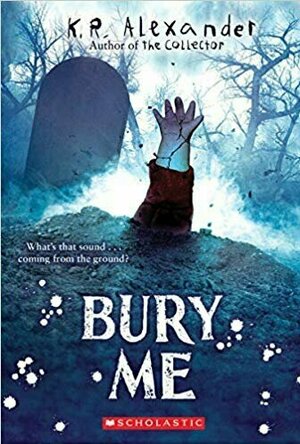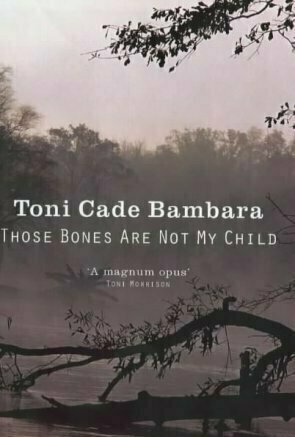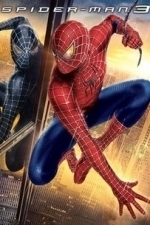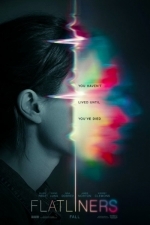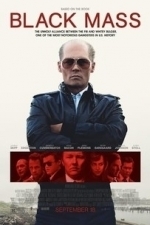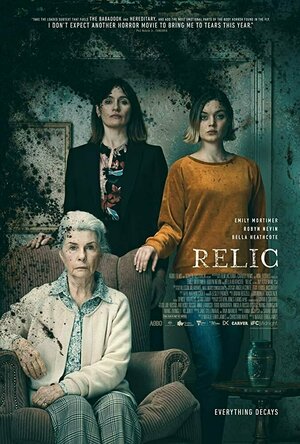Search
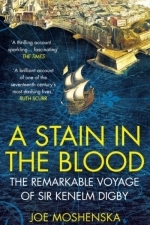
A Stain in the Blood: The Remarkable Voyage of Sir Kenelm Digby
Book
SHORTLISTED FOR THE JAMES TAIT BLACK PRIZE FOR BIOGRAPHY and THE ELIZABETH LONGFORD PRIZE FOR...
History
Great writing (1 more)
Unpredictable
Some typos (1 more)
The mom was a waste of a character
In horror books and movies, we often see dolls as the main source of scares( such as Annabelle or Child's Play). In K.R. Alexander's Bury Me we get another scary doll to add to the list with some pretty good spine chilling moments, too.
We start with Kimberly Rice, who is a kid with a vivid imagination that can imagine up anything her heart desires, but because of this, people don't believe her when strange things begin to happen in Copper Hollow. She has two friends named Alicia and James- - -but Kimberly feels like she doesn't fit in with them because they live in houses while she lives in a trailer. "I wait for them to say, Hey, Kimberly, do you want to come over for dinner? They don't. They never have. It hurt my feelings at first, but I got over it fast. They're still my best and only friends, so I can't really complain when they don't have me over to their houses. It's not like I can really invite them over to mine. " Kimberly explains.
Although she states that they are her best friends, there is another part that may suggest otherwise. At first, we read about Kimberly being ashamed of her home although she states she has never tried to invite her friends over - - - as far as we know - - - but during a scene where Kimberly goes over to Alicia's home for help with this doll, Alicia doesn't invite her inside, which Kimberly points out.
But Kimberly's dysfunctional friendships aren't what the story is about. The book is about a doll that suddenly shows up with the words 'bury me' written across its dress in black ink. The perfect setting for a horror story. Kimberly teams up with her friends, Alicia and James, to figure out what this doll wants.
Alicia convinces Kimberly to do what the doll's dress says: 'bury me.' But even after they do this, the doll somehow shows up again, without having disturbed its burial place. They finally begin to question whether or not the doll is possessed by an evil spirit because the doll's mouth moves on its own, making frowns and even seeming to silently scream at one point, and no matter what they do, the doll always comes back completely intact. Yet, the only one the doll seems to be 'haunting' is Kimberly, although James and Alicia participate in trying to get rid of it. Kimberly is also haunted by dreams that aren't exactly her own, but she doesn't reveal these to her friends- - - which doing so may have helped in the long run. As a result, the friends never really figure out how to get rid of the doll, it seems that only Kimberly's dreams can figure this out (it just takes her nearly the entire book to figure it out).
The horror elements in this story are pretty good, but as the book recommended age states, it's for pre-teens. Yet, Alexander did a better job on this than 'The Collector' when it came to those elements. I honestly really enjoyed this book, even as an adult.
We continue with Alicia and James beginning to question Kimberly, thinking that this is just a prank she has come up with because their town is boring: " 'Did you do this?' Alicia asks, looking straight at me. Once more, my heart throbs- - -but this time, with a note of anger.
'Why would I do something like this?' I ask.
'Because Copper Hollow is boring and you're trying to make it fun with another one of your wild stories?' She doesn't sound accusatory; she sounds like she's running out of options that make sense, and she doesn't like that at all. "
Kimberly also has to deal with a history book on Copper Hollow that only shows blank pages to her, even when she shows it to adults, they seem to go into a daze as if the book doesn't even exist to them. Even when she asks the Mayor about this very book, he has no idea what she's speaking of. " I try to change the subject. 'I finished that book. The one about our history.'
'Book? ' Mayor Couch asks. 'What book?'
'The one I showed you.'
He chuckles. 'You and your imagination. I don't remember you showing me a book. ' "
Readers and Kimberly still have no idea what is going half way through the book. "Something weird is going on with him. It makes me wonder. . . is it linked to the doll? Or maybe he just has some sort of memory loss? "
While Kimberly is going through all of this, her mother seems like a wasted character to introduce. She, who is rarely home and works double shifts throughout the entire book, is never there for Kimberly, but also,Kimberly never goes to her mother for help.
The story starts quickly, getting right into the doll appearing, and by the end, we learn something that was not predictable - - -this is good writing. Bury Me is what YA horror books should be: suspense, unpredictable moments and likable characters. And compared to Alexander's first book, The Collector, his story telling is getting better to the point that I am looking forward to reading his other recent books, but hopefully he sticks to telling stories with children and not adults.
I highly recommend this book to fans of R.L. Stine's 'Goosebumps,' because I truly believe we have our next R.L. Stine. Great story, great writing.
We start with Kimberly Rice, who is a kid with a vivid imagination that can imagine up anything her heart desires, but because of this, people don't believe her when strange things begin to happen in Copper Hollow. She has two friends named Alicia and James- - -but Kimberly feels like she doesn't fit in with them because they live in houses while she lives in a trailer. "I wait for them to say, Hey, Kimberly, do you want to come over for dinner? They don't. They never have. It hurt my feelings at first, but I got over it fast. They're still my best and only friends, so I can't really complain when they don't have me over to their houses. It's not like I can really invite them over to mine. " Kimberly explains.
Although she states that they are her best friends, there is another part that may suggest otherwise. At first, we read about Kimberly being ashamed of her home although she states she has never tried to invite her friends over - - - as far as we know - - - but during a scene where Kimberly goes over to Alicia's home for help with this doll, Alicia doesn't invite her inside, which Kimberly points out.
But Kimberly's dysfunctional friendships aren't what the story is about. The book is about a doll that suddenly shows up with the words 'bury me' written across its dress in black ink. The perfect setting for a horror story. Kimberly teams up with her friends, Alicia and James, to figure out what this doll wants.
Alicia convinces Kimberly to do what the doll's dress says: 'bury me.' But even after they do this, the doll somehow shows up again, without having disturbed its burial place. They finally begin to question whether or not the doll is possessed by an evil spirit because the doll's mouth moves on its own, making frowns and even seeming to silently scream at one point, and no matter what they do, the doll always comes back completely intact. Yet, the only one the doll seems to be 'haunting' is Kimberly, although James and Alicia participate in trying to get rid of it. Kimberly is also haunted by dreams that aren't exactly her own, but she doesn't reveal these to her friends- - - which doing so may have helped in the long run. As a result, the friends never really figure out how to get rid of the doll, it seems that only Kimberly's dreams can figure this out (it just takes her nearly the entire book to figure it out).
The horror elements in this story are pretty good, but as the book recommended age states, it's for pre-teens. Yet, Alexander did a better job on this than 'The Collector' when it came to those elements. I honestly really enjoyed this book, even as an adult.
We continue with Alicia and James beginning to question Kimberly, thinking that this is just a prank she has come up with because their town is boring: " 'Did you do this?' Alicia asks, looking straight at me. Once more, my heart throbs- - -but this time, with a note of anger.
'Why would I do something like this?' I ask.
'Because Copper Hollow is boring and you're trying to make it fun with another one of your wild stories?' She doesn't sound accusatory; she sounds like she's running out of options that make sense, and she doesn't like that at all. "
Kimberly also has to deal with a history book on Copper Hollow that only shows blank pages to her, even when she shows it to adults, they seem to go into a daze as if the book doesn't even exist to them. Even when she asks the Mayor about this very book, he has no idea what she's speaking of. " I try to change the subject. 'I finished that book. The one about our history.'
'Book? ' Mayor Couch asks. 'What book?'
'The one I showed you.'
He chuckles. 'You and your imagination. I don't remember you showing me a book. ' "
Readers and Kimberly still have no idea what is going half way through the book. "Something weird is going on with him. It makes me wonder. . . is it linked to the doll? Or maybe he just has some sort of memory loss? "
While Kimberly is going through all of this, her mother seems like a wasted character to introduce. She, who is rarely home and works double shifts throughout the entire book, is never there for Kimberly, but also,Kimberly never goes to her mother for help.
The story starts quickly, getting right into the doll appearing, and by the end, we learn something that was not predictable - - -this is good writing. Bury Me is what YA horror books should be: suspense, unpredictable moments and likable characters. And compared to Alexander's first book, The Collector, his story telling is getting better to the point that I am looking forward to reading his other recent books, but hopefully he sticks to telling stories with children and not adults.
I highly recommend this book to fans of R.L. Stine's 'Goosebumps,' because I truly believe we have our next R.L. Stine. Great story, great writing.
Hadley (567 KP) rated Those Bones Are Not My Child in Books
Nov 12, 2019
A different type of True Crime book (1 more)
Things you probably didn't know about the case
Writing transitions are confusing (1 more)
Smash poetry breaks up the flow
Toni Cade Bambara, a writer, documentary filmmaker and screenwriter, gives True Crime readers a unique viewpoint of the real Atlanta Child Murders. Bambara mostly writes from the eyes of Marzala, a mother of three whose oldest son goes missing during one of the worst murder sprees in Atlanta's history. Marzala and her family were not actual people during this time- - - all of them are based off of parents and siblings of the real victims. Not soon after Marzala does everything she can with the police to find her son, she joins a group of African-Americans that are outraged by the lack of progress to catch who is killing Atlanta's black children. This group forms what is called STOP (a citizen-run task force). For the majority of the book, Marzala with most of the black community in the area typed out letters to prominent government officials asking for help to stop the murders, also using Vietnam vets in the area to use their tracking skills to keep an eye on suspects, and investigating buildings that police refused to believe had anything to do with the childrens' disappearances and/or murders, which Bambara did an amazing job putting all the real facts together of the actual community members that were involved with this at the time. This story is upsetting, but enlightening on how politics may have caused so many children to be murdered. This is a story no reader will ever forget.
Bambara writes not in a normal narrative - - - just telling a story from specific viewpoints, but she often breaks off into smash poetry to depict a character's state-of-mind, which, sometimes can be off putting for the reader, breaking the flow of the story. Yet, the use of smash poetry combined with the era and the heart breaking subject at hand, separates Those Bones Are Not My Child from every True Crime book I have ever read. But a note for fans of True Crime, this story is from the view point of the victims' families and the search they went through to try and catch the murderer(s), unlike most TC books, which follow the police through the investigation leading to, usually, the capture of the perpetrator. From living in Atlanta during the time of the murders, Bambara was able to reconstruct the life of a black family in 1980's Georgia, while focusing on the effect these terrible crimes had on the surrounding community. Bambara did an amazing job on what most writers cannot.
The amount of characters, specifically the fictional ones, are very well created. She describes just enough to give readers the ability to tell them apart, showing every now and then from their own viewpoints. Out of all the characters, I came to really like Zala's two other children: Kenti and Kofi. One particular scene shows the strain of Sonny's disappearance on their family: " Zala parked the comb again and sat back. 'Listen, you two.' Kofi dropped down onto his knees. 'The police and the newspapers don't know what the hell is going on, so they feel stupid, because they're supposed to know, they're trained to know, they're paid to know. It's their job. Understand? But it's hard for grown-ups to admit they're stupid, especially if they're professionals like police and reporters. So they blame the children. Or they ignore them and fill up the papers with the hostages in Iran. Understand? And now... Jesus... they've got people calling those kids juvenile delinquents.'
'Don't cry.' Kenti tried to lean into her lap and got pushed away.
'They don't know a damn thing and they act like they don't want to know. So they blame the kids 'cause they can't speak up for themselves. They say the kids had no business being outdoors, getting themselves in trouble.'
'You let us go outdoors.'
'Of course I do, baby. We go lots of places, 'cause a lot of people fought hard for our right to go any damn where we please. But when the children go out like they've a right to and some maniac grabs them, then it's the children's fault or the parents who should've been watching every minute, like we don't have to work like dogs just to put food on the table.'
Kofi walked on his knees towards the bed, but he didn't lean on her like he wanted 'cause she might push him away. So he just put his hand on the mattress next to hers."
During the Atlanta Child Murders, victims were random, except for that they were children from the same neighborhood, and they were African-American. At first, police didn't believe a serial murderer was going around abducting children, but rather that 'poor, broken' families were killing their own. In the Prologue, Bambara shows that the victims' families and private detectives came up with more ideas of the motive than the police did:
" White cops taking license in Black neighborhoods.
The Klan and other Nazi thugs on the rampage.
Diabolical scientists experimenting on Third World people.
Demonic cults engaging in human sacrifices.
A 'Nam vet unable to make the transition.
UFO aliens conducting exploratory surgery.
Whites avenging Dewey Baugus, a white youth beaten to death in spring '79, allegedly by Black youths.
Parents of a raped child running amok with 'justice.'
Porno filmmakers doing snuff flicks for entertainment.
A band of child molesters covering their tracks.
New drug forces killing the young (unwitting?) couriers of the old in a bid for turf.
Unreconstructed peckerwoods trying to topple the Black administration.
Plantation kidnappers of slave labor issuing the pink slip.
White mercenaries using Black targets to train death squadrons for overseas jobs and for domestic wars to come. "
All of these theories are explored with evidence in Those Bones Are Not My Child. One scene in Part III, Zala's cop friend, B.J. shows up to her house to tell her to stop bringing attention to the investigation, " 'That Eubanks woman - - - your husband's friend? - - - she said you were bringing in the TV networks to blow the case open. I thought we had an agreement to keep each other informed. This morning I find out through the grapevine that you parents got a medium stashed in a hotel here in town, some woman who's been making headlines up north with cases that supposedly have the authorities stumped. If you knew how much work has been done on this case - - - no, listen, don't interrupt me. Then I find out - - - and not from you - - - that some of you parents are planning to tour the country cracking on the investigation. That's not too smart. And you should have told me.' " These two may have been fictional characters, but in Bambara's Acknowledgments, she states that all scenarios were true, and that she made B.J. to tell about the actual police officers who were involved with the investigation.
The tension between the police and the public is felt throughout the entire story. Despite all of the work the citizen task force put in, police arrested a man named Wayne Williams for the murder of two adult victims (who, due to their mental age, which was stated to be that of children, were placed on the victims' list of the Atlanta Child Murders): " Wayne Williams, charged with the murder of twenty-seven-year-old Nathaniel Cater and implicated in the murder of the other adults and children on the official list..." Zala, having worked for almost a year at the STOP offices, she, along with most of the community, doubt that Williams was a lone killer or even the killer at all. Williams never stood trial for the childrens' murders, but the police informed the public that he did it, case closed - - - although, after Williams' arrest, children were still being abducted and their bodies were still being found. Even after Williams' trial and the guilty verdict for two adult victims, some people stuck around to continue to investigate and claim Williams a 'scapegoat' of politics: " There were still pockets of interest and people who wouldn't let the case go. James Baldwin had been coming to town off and on; a book was rumored. Sondra O'Neale, the Emory University professor, hadn't abandoned her research, either. From time to time, TV and movie types were in the city poking around for an angle. Camille Bell was moving to Tallahassee to write up the case from the point of view of the STOP committee. The vets had taken over The Call now that Speaker was working full-time with the Central American Committee. The Revolutionary Communist Party kept running pieces on the case in the Revolutionary Worker. Whenever Abby Mann sent down a point man for his proposed TV docudrama, the Atlanta officials and civil rights leaders would go off the deep end. " At the end of it all, the questions still remain: did Williams kill all of those children by himself? Was he part of a pornographic cult that killed the children? Or is Williams completely innocent, and the murderer(s) are still out there? In Those Bones Are Not My Child, I guarantee you will be left questioning if the police were right.
All in all, the writing transitions can become confusing sometimes, especially the interludes of smash poetry, but I highly recommend this book to people who like the True Crime genre, especially of any interest in this specific case.
Bambara writes not in a normal narrative - - - just telling a story from specific viewpoints, but she often breaks off into smash poetry to depict a character's state-of-mind, which, sometimes can be off putting for the reader, breaking the flow of the story. Yet, the use of smash poetry combined with the era and the heart breaking subject at hand, separates Those Bones Are Not My Child from every True Crime book I have ever read. But a note for fans of True Crime, this story is from the view point of the victims' families and the search they went through to try and catch the murderer(s), unlike most TC books, which follow the police through the investigation leading to, usually, the capture of the perpetrator. From living in Atlanta during the time of the murders, Bambara was able to reconstruct the life of a black family in 1980's Georgia, while focusing on the effect these terrible crimes had on the surrounding community. Bambara did an amazing job on what most writers cannot.
The amount of characters, specifically the fictional ones, are very well created. She describes just enough to give readers the ability to tell them apart, showing every now and then from their own viewpoints. Out of all the characters, I came to really like Zala's two other children: Kenti and Kofi. One particular scene shows the strain of Sonny's disappearance on their family: " Zala parked the comb again and sat back. 'Listen, you two.' Kofi dropped down onto his knees. 'The police and the newspapers don't know what the hell is going on, so they feel stupid, because they're supposed to know, they're trained to know, they're paid to know. It's their job. Understand? But it's hard for grown-ups to admit they're stupid, especially if they're professionals like police and reporters. So they blame the children. Or they ignore them and fill up the papers with the hostages in Iran. Understand? And now... Jesus... they've got people calling those kids juvenile delinquents.'
'Don't cry.' Kenti tried to lean into her lap and got pushed away.
'They don't know a damn thing and they act like they don't want to know. So they blame the kids 'cause they can't speak up for themselves. They say the kids had no business being outdoors, getting themselves in trouble.'
'You let us go outdoors.'
'Of course I do, baby. We go lots of places, 'cause a lot of people fought hard for our right to go any damn where we please. But when the children go out like they've a right to and some maniac grabs them, then it's the children's fault or the parents who should've been watching every minute, like we don't have to work like dogs just to put food on the table.'
Kofi walked on his knees towards the bed, but he didn't lean on her like he wanted 'cause she might push him away. So he just put his hand on the mattress next to hers."
During the Atlanta Child Murders, victims were random, except for that they were children from the same neighborhood, and they were African-American. At first, police didn't believe a serial murderer was going around abducting children, but rather that 'poor, broken' families were killing their own. In the Prologue, Bambara shows that the victims' families and private detectives came up with more ideas of the motive than the police did:
" White cops taking license in Black neighborhoods.
The Klan and other Nazi thugs on the rampage.
Diabolical scientists experimenting on Third World people.
Demonic cults engaging in human sacrifices.
A 'Nam vet unable to make the transition.
UFO aliens conducting exploratory surgery.
Whites avenging Dewey Baugus, a white youth beaten to death in spring '79, allegedly by Black youths.
Parents of a raped child running amok with 'justice.'
Porno filmmakers doing snuff flicks for entertainment.
A band of child molesters covering their tracks.
New drug forces killing the young (unwitting?) couriers of the old in a bid for turf.
Unreconstructed peckerwoods trying to topple the Black administration.
Plantation kidnappers of slave labor issuing the pink slip.
White mercenaries using Black targets to train death squadrons for overseas jobs and for domestic wars to come. "
All of these theories are explored with evidence in Those Bones Are Not My Child. One scene in Part III, Zala's cop friend, B.J. shows up to her house to tell her to stop bringing attention to the investigation, " 'That Eubanks woman - - - your husband's friend? - - - she said you were bringing in the TV networks to blow the case open. I thought we had an agreement to keep each other informed. This morning I find out through the grapevine that you parents got a medium stashed in a hotel here in town, some woman who's been making headlines up north with cases that supposedly have the authorities stumped. If you knew how much work has been done on this case - - - no, listen, don't interrupt me. Then I find out - - - and not from you - - - that some of you parents are planning to tour the country cracking on the investigation. That's not too smart. And you should have told me.' " These two may have been fictional characters, but in Bambara's Acknowledgments, she states that all scenarios were true, and that she made B.J. to tell about the actual police officers who were involved with the investigation.
The tension between the police and the public is felt throughout the entire story. Despite all of the work the citizen task force put in, police arrested a man named Wayne Williams for the murder of two adult victims (who, due to their mental age, which was stated to be that of children, were placed on the victims' list of the Atlanta Child Murders): " Wayne Williams, charged with the murder of twenty-seven-year-old Nathaniel Cater and implicated in the murder of the other adults and children on the official list..." Zala, having worked for almost a year at the STOP offices, she, along with most of the community, doubt that Williams was a lone killer or even the killer at all. Williams never stood trial for the childrens' murders, but the police informed the public that he did it, case closed - - - although, after Williams' arrest, children were still being abducted and their bodies were still being found. Even after Williams' trial and the guilty verdict for two adult victims, some people stuck around to continue to investigate and claim Williams a 'scapegoat' of politics: " There were still pockets of interest and people who wouldn't let the case go. James Baldwin had been coming to town off and on; a book was rumored. Sondra O'Neale, the Emory University professor, hadn't abandoned her research, either. From time to time, TV and movie types were in the city poking around for an angle. Camille Bell was moving to Tallahassee to write up the case from the point of view of the STOP committee. The vets had taken over The Call now that Speaker was working full-time with the Central American Committee. The Revolutionary Communist Party kept running pieces on the case in the Revolutionary Worker. Whenever Abby Mann sent down a point man for his proposed TV docudrama, the Atlanta officials and civil rights leaders would go off the deep end. " At the end of it all, the questions still remain: did Williams kill all of those children by himself? Was he part of a pornographic cult that killed the children? Or is Williams completely innocent, and the murderer(s) are still out there? In Those Bones Are Not My Child, I guarantee you will be left questioning if the police were right.
All in all, the writing transitions can become confusing sometimes, especially the interludes of smash poetry, but I highly recommend this book to people who like the True Crime genre, especially of any interest in this specific case.
Ryan Hill (152 KP) rated Spider-Man 3 (2007) in Movies
Jul 1, 2019 (Updated Jul 3, 2019)
"None of that matters now, you're my friend"
After the worldwide success of the first two "Spider-Man" films, director Sam Raimi and the cast decided to take a break. The first two had been shot almost back-to-back, with very little "down time" in between. So, in late 2005, about 18 months after the release of "Spider-Man 2", Raimi began fleshing out ideas for a third storyline. For this chapter, the director wanted to teach Peter Parker about forgiveness; to do so, he'd need a villain with personal ties. The problem was that, besides the Osborn family and Otto Octavius, no villains in the comics had such a huge connection. Raimi didn't want to contradict a well-established character, so he sought one out whose backstory had never been fully realized: the Sandman, whose literary incarnation was little more than a random thief. Connecting the character to the death of Ben Parker gave Peter a huge obstacle that needed facing. Wrapping up Harry Osborn's story was also necessary, since Marvel wasn't sure if James Franco would agree to more chapters in the franchise. The addition of Gwen Stacy (who in the comics, was Peter's first love) was done mainly for the fans, and to create a conflicted love triangle with Peter & Mary Jane. Satisfied with his concept, Raimi told his plans to Marvel Comics; the result was less than expected.
Therein lies my biggest problem with "Spider-Man 3". I liked the Venom character as a kid, but in all honesty having 4 villains in the same film (Harry, Marko, the black symbiote itself, and eventually Venom) was just too much at once. From the standpoint of a fan, I'd have preferred that Venom be saved for a future entry, so he could have taken center stage. By having him alongside both Marko and Harry Osborn, the story became rather confusing for many fans, and the film's box office suffered as a direct result. Overall, this film made less money across the board than its predecessor...all because of corporate greed.
That being said, I still enjoy the film on many levels, but knowing what caused the multi-arc story makes some moments bittersweet. The actors clearly enjoyed this ride, but something in general seemed a bit lacking. Looking back, I realize it was the Venom character. The fact of it essentially being forced into the narrative only made the tale confusing and hard to follow. It became one of those films many people have to watch more than once, just to understand it...and these days, audiences don't have a lot of patience for films with too many angles. Rightfully so, in my opinion.
Tobey Maguire, slipping into the spandex suit for a third try, really shows his acting range here, even more so than his diverse performance in "Spider-Man 2". From intense love to seething hatred (and everything in between), he really brings his game up to a whole new level. Kirsten Dunst shines again as Parker's star-crossed love, Mary Jane Watson. I liked her performance very much, and her singing in the film is beautiful. She's less helpless than in either prior entry, and far more confident. Bryce Dallas Howard (daughter of acclaimed director Ron) makes her first apearance in the franchise as the bubbling, exuberant, and gorgeous Gwen Stacy. I liked her character, but felt she didn't have much to do in the long run.
James Franco does an equally-remarkable turn, finally completing the journey that began at the end of the original film. He gives Harry a blend of jealousy, mystique, and severe determination. He also revisits the lighter tones of his role, for the scenes where Harry has amnesia. And in the finale, he shows that in his heart, Harry was truly a hero. Thomas Haden Church gave Marko both sentiment and menace, and turned what was originally a two-bit thug into a far more interesting character. Topher Grace played the "creepy" card as Venom, and gave Eddie Brock a know-it-all arrogance that makes you almost feel disgusted.
Aside from the criticisms surrounding Venom, I honestly didn't have a lot for this entry. Mary Jane is no longer in a water-drenched position (thank God!), so I was very relieved. I guess my main concern was that there were too many villians should of just stuck with Harry and Venom or Harry and sandman. And for anyone who asks why i haven't put the dancing scenes as a negative. I get a kick out of them what can i say?
Therein lies my biggest problem with "Spider-Man 3". I liked the Venom character as a kid, but in all honesty having 4 villains in the same film (Harry, Marko, the black symbiote itself, and eventually Venom) was just too much at once. From the standpoint of a fan, I'd have preferred that Venom be saved for a future entry, so he could have taken center stage. By having him alongside both Marko and Harry Osborn, the story became rather confusing for many fans, and the film's box office suffered as a direct result. Overall, this film made less money across the board than its predecessor...all because of corporate greed.
That being said, I still enjoy the film on many levels, but knowing what caused the multi-arc story makes some moments bittersweet. The actors clearly enjoyed this ride, but something in general seemed a bit lacking. Looking back, I realize it was the Venom character. The fact of it essentially being forced into the narrative only made the tale confusing and hard to follow. It became one of those films many people have to watch more than once, just to understand it...and these days, audiences don't have a lot of patience for films with too many angles. Rightfully so, in my opinion.
Tobey Maguire, slipping into the spandex suit for a third try, really shows his acting range here, even more so than his diverse performance in "Spider-Man 2". From intense love to seething hatred (and everything in between), he really brings his game up to a whole new level. Kirsten Dunst shines again as Parker's star-crossed love, Mary Jane Watson. I liked her performance very much, and her singing in the film is beautiful. She's less helpless than in either prior entry, and far more confident. Bryce Dallas Howard (daughter of acclaimed director Ron) makes her first apearance in the franchise as the bubbling, exuberant, and gorgeous Gwen Stacy. I liked her character, but felt she didn't have much to do in the long run.
James Franco does an equally-remarkable turn, finally completing the journey that began at the end of the original film. He gives Harry a blend of jealousy, mystique, and severe determination. He also revisits the lighter tones of his role, for the scenes where Harry has amnesia. And in the finale, he shows that in his heart, Harry was truly a hero. Thomas Haden Church gave Marko both sentiment and menace, and turned what was originally a two-bit thug into a far more interesting character. Topher Grace played the "creepy" card as Venom, and gave Eddie Brock a know-it-all arrogance that makes you almost feel disgusted.
Aside from the criticisms surrounding Venom, I honestly didn't have a lot for this entry. Mary Jane is no longer in a water-drenched position (thank God!), so I was very relieved. I guess my main concern was that there were too many villians should of just stuck with Harry and Venom or Harry and sandman. And for anyone who asks why i haven't put the dancing scenes as a negative. I get a kick out of them what can i say?
Bob Mann (459 KP) rated Flatliners (2017) in Movies
Sep 29, 2021
The undiscovered country… which they shouldn’t have returned to.
The movies have depicted the hereafter in varied ways over the years. From the bleached white warehouses of Powell and Pressburger’s “A Matter of Life and Death” in 1946 and Warren Beatty’s “Heaven Can Wait” in 1978 to – for me – the peak of the game: Vincent Ward’s mawkish but gorgeously rendered oil-paint version of heaven in 1998’s “What Dreams May Come”. Joel Schmacher’s 1990’s “Flatliners” saw a set of “brat pack” movie names of the day (including Kevin Bacon, Julia Roberts, William Baldwin and Kiefer Sutherland) as experimenting trainee doctors, cheating death to experience the afterlife and getting more than they bargained for. The depictions of the afterlife were unmemorable: in that I don’t remember them much! (I think there was some sort of spooky tree involved, but that’s about it!)
But the concept was sufficiently enticing – who isn’t a little bit intrigued by the question of “what’s beyond”? – that Cross Creek Pictures thought it worthy of dusting off and giving it another outing in pursuit of dirty lucre. But unfortunately this offering adds little to the property’s reputation.
In this version, the lead role is headed up by Ellen Page (“Inception”) who is a great actress… too good for this stuff. Also in that category is Diego Luna, who really made an impact in “Rogue One” but here has little to work with in terms of backstory. The remaining three doctors – Nina Dobrev as “the sexy one”; James Norton (“War and Peace”) as “the posh boy” and Kiersey Clemons as the “cute but repressed one”, all have even less backstory and struggle to make a great impact.
Still struggling to get the high score on Angry Birds: from left to right Ray (Diego Luna), Sophia (Kiersey Clemons), Marlo (Nina Dobrev), Courtney (Ellen Page) and Jamie (James Norton).
Also putting in an appearance, as the one link from the original film, is Kiefer Sutherland as a senior member of the teaching staff. But he’s not playing the same character (that WOULD have been a bloody miracle!) and although Sutherland adds gravitas he really is given criminally little to do. What was director Niels Arden Oplev (“The Girl with the Dragon Tattoo”) thinking?
In terms of the story, it’s pretty much a re-hash of Peter Filardi’s original, with Ben Ripley (“Source Code”) adding a few minor tweaks to the screenplay to update it for the current generation. But I will levy the same criticism of this film as I levied at the recent Stephen King adaptation of “It”: for horror to work well it need to obey some decent ‘rules of physics’ and although most of the scenes work (since a lot of the “action” is sensibly based inside the character’s heads) there are the occasional linkages to the ‘real world’ that generate a “WTF???” response. A seemingly indestructible Mini car (which is also clearly untraceable by the police!) and a knife incident at the dockside are two cases in point.
Is there anything good to say about this film? Well, there are certainly a few tense moments that make the hairs on your neck at least start to stand to attention. But these are few and far between, amongst a sea of movie ‘meh’. It’s certainly not going to be the worst film I see this year, since at least I wasn’t completely bored for the two hours. But I won’t remember this one in a few weeks. As a summary in the form of a “Black Adder” quote, it’s all a bit like a broken pencil….. pointless.
But the concept was sufficiently enticing – who isn’t a little bit intrigued by the question of “what’s beyond”? – that Cross Creek Pictures thought it worthy of dusting off and giving it another outing in pursuit of dirty lucre. But unfortunately this offering adds little to the property’s reputation.
In this version, the lead role is headed up by Ellen Page (“Inception”) who is a great actress… too good for this stuff. Also in that category is Diego Luna, who really made an impact in “Rogue One” but here has little to work with in terms of backstory. The remaining three doctors – Nina Dobrev as “the sexy one”; James Norton (“War and Peace”) as “the posh boy” and Kiersey Clemons as the “cute but repressed one”, all have even less backstory and struggle to make a great impact.
Still struggling to get the high score on Angry Birds: from left to right Ray (Diego Luna), Sophia (Kiersey Clemons), Marlo (Nina Dobrev), Courtney (Ellen Page) and Jamie (James Norton).
Also putting in an appearance, as the one link from the original film, is Kiefer Sutherland as a senior member of the teaching staff. But he’s not playing the same character (that WOULD have been a bloody miracle!) and although Sutherland adds gravitas he really is given criminally little to do. What was director Niels Arden Oplev (“The Girl with the Dragon Tattoo”) thinking?
In terms of the story, it’s pretty much a re-hash of Peter Filardi’s original, with Ben Ripley (“Source Code”) adding a few minor tweaks to the screenplay to update it for the current generation. But I will levy the same criticism of this film as I levied at the recent Stephen King adaptation of “It”: for horror to work well it need to obey some decent ‘rules of physics’ and although most of the scenes work (since a lot of the “action” is sensibly based inside the character’s heads) there are the occasional linkages to the ‘real world’ that generate a “WTF???” response. A seemingly indestructible Mini car (which is also clearly untraceable by the police!) and a knife incident at the dockside are two cases in point.
Is there anything good to say about this film? Well, there are certainly a few tense moments that make the hairs on your neck at least start to stand to attention. But these are few and far between, amongst a sea of movie ‘meh’. It’s certainly not going to be the worst film I see this year, since at least I wasn’t completely bored for the two hours. But I won’t remember this one in a few weeks. As a summary in the form of a “Black Adder” quote, it’s all a bit like a broken pencil….. pointless.
Gareth von Kallenbach (980 KP) rated Black Mass (2015) in Movies
Aug 6, 2019
He was one of the most dangerous men and most notorious gangsters in American history. For over sixteen years he evaded the FBI and law enforcement until his eventual capture in 2011. Black Mass tells the story of James “Whitey” Bulger and his alliance with the FBI. The film delves deep into the relationship that is built between Bulger and FBI agents which allows him to expand his power beyond the Boston area. Audiences will be awestruck by the actions permitted and overlooked on the part of FBI agents working with Bulger which fall in line with the advice that Bulger gives his son: “If no one saw it, it didn’t happen.”
Johnny Depp (Pirates of the Caribbean, Sleepy Hollow, Edward Scissorhands) assumes the role of Bulger and audiences will not be able to take their eyes off of him in this film. Every movement, word, and action that he provides on screen demonstrates his versatility and ability to wear the skin and assume identity of those that he portrays. His portrayal of Whitey Bulger separates him from the “Jack Sparrow” identity that his audiences have become accustomed to. Even more impressive about his acting is the way in which the film’s direction displays more of a human element to this monster. The audience is shown countless acts of brutality undertaken by Bulger or on his orders, but there are moments in which you feel a sense of sorrow for the character. In no way do the moments allow for redemption or offer excuses for his actions, but it allows for the portrayal of a more human element. Humanizing Bulger allows for a much fuller picture of what took place during his life and demonstrates that crime was not the only factor.
The film takes all of us into a very dark place. We see a monster in action. We see countless people fall victim to Bulger and his organization. Depp intimidates not only the other characters being portrayed, but the audience in the way that his eyes always seem so cold and heartless. It is said that when you look into someone’s eyes, you can see their soul. With Whitey Bulger, his soul is absent whenever he is portrayed onscreen. This helps to solidify Depp’s portrayal of Bulger and the way that he lived his life. He was a cold, heartless monster. The only sense of a soul or any humanity comes with the direction of the film to make this monster human.
Johnny Depp (Pirates of the Caribbean, Sleepy Hollow, Edward Scissorhands) assumes the role of Bulger and audiences will not be able to take their eyes off of him in this film. Every movement, word, and action that he provides on screen demonstrates his versatility and ability to wear the skin and assume identity of those that he portrays. His portrayal of Whitey Bulger separates him from the “Jack Sparrow” identity that his audiences have become accustomed to. Even more impressive about his acting is the way in which the film’s direction displays more of a human element to this monster. The audience is shown countless acts of brutality undertaken by Bulger or on his orders, but there are moments in which you feel a sense of sorrow for the character. In no way do the moments allow for redemption or offer excuses for his actions, but it allows for the portrayal of a more human element. Humanizing Bulger allows for a much fuller picture of what took place during his life and demonstrates that crime was not the only factor.
The film takes all of us into a very dark place. We see a monster in action. We see countless people fall victim to Bulger and his organization. Depp intimidates not only the other characters being portrayed, but the audience in the way that his eyes always seem so cold and heartless. It is said that when you look into someone’s eyes, you can see their soul. With Whitey Bulger, his soul is absent whenever he is portrayed onscreen. This helps to solidify Depp’s portrayal of Bulger and the way that he lived his life. He was a cold, heartless monster. The only sense of a soul or any humanity comes with the direction of the film to make this monster human.

So You Think You Know About Britain?
Book
When it comes to immigration, the population explosion, the collapse of the family, the north-south...
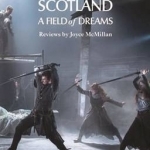
Theatre in Scotland - A Field of Dreams
Joyce McMillan and Philip Howard
Book
'She has, to my knowledge, an almost unblemished record in never having failed to spot a great new...

Bonita Avenue
Book
A darkly hilarious tale of a model family's disintegration. Professor Siem Sigerius - maths genius,...
Lee (2222 KP) rated Relic (2020) in Movies
Sep 2, 2020
I only became aware of Relic back in June. After looking into it a little more, I started to come across the traditional ‘scariest movie of the year’ headlines, which seem to accompany the release of pretty much every movie of this kind before release. I also saw comparisons being made to both Hereditary and The Babadook, and anyone who has ever heard any of my rantings on the subject before will know exactly which opposite ends of the movie rating scale I consider those movies to be on! Thankfully, this feature debut from writer/director Natalie Erika James lands nicely on the same end of the scale as The Babadook.
When Kay (Emily Mortimer) receives word that her elderly mother, Edna (Robyn Nevin) has gone missing, she and daughter Sam (Bella Heathcote) drive out to her rural home to investigate. We’d already been introduced to Edna briefly in the opening scene, where she stood naked with her back to us, in a sequence which had already managed to introduce an overwhelming sense of dread and unease. Something that Relic continues to build upon for much of its 89 minute runtime.
Kay and Sam spend some time in the house, liaising with the police and looking for clues to Edna’s whereabouts while they rummage through her large house. Post-it note reminders are dotted around the house, indicating that Edna is now struggling with dementia. From the simple, helpful kind of reminder, such as “take pills” and “turn off the tap”, to the slightly more sinister “don’t follow it”. There are lots of strange, unexplained noises in the house too, with a black mould growing on some of the walls. All the while, a pulsing, pounding score in the background continues to effectively layer up on that dread and unease I mentioned before. While browsing through some paperwork, Kay finds an old sketch of a cabin in the woods and casually mentions to Sam that it was where her great grandfather died alone, of dementia. Apparently the windows, and other elements of the cabin, were used in the building of the house that they are now in, and despite the fact that Kay is currently suffering from dark and disturbing nightmares involving the cabin and her great grandfather, none of this seems to trigger any alarm bells whatsoever!
When Edna suddenly returns home one morning, with no memory of where she’s been, she has dirt under her fingernails and a large and nasty bruise on her chest, which over time begins to look suspiciously like that black mould that’s forming on the walls. While Sam wants to stay and be near to her grandmother, Kay is more focused in checking out care homes to ship her off to. Edna swings between being perfectly normal, with a sharp memory, to periods of forgetfulness and rage. Some time taken to follow the family interactions over the next few days really helps to deepen the characters’ relationships in our minds, highlighting existing tensions between them. And restricting pretty much all of the movie to the confines of the mysterious house only serves to ramp up the unease, in preparation for the final act.
The description of Relic on IMDb states “a manifestation of dementia consumes the family home”, and you can probably gather as much anyway, just by watching the trailer. Instead of the traditional haunted-house movie that you might expect from the earlier part of the movie, we’re treated to an allegory for the horrors of dementia. The house becomes the star of the movie, seemingly altering itself to induce claustrophobia, confusion and panic in Sam and Kay as they become trapped in its shifting corridors, lowered ceilings and newly sealed doors.
Relic can at times feel a little too metaphor driven, and while I understood the beauty and the meaning behind it’s closing moments, I felt it threw up a lot more questions than it answered. Depending on how much that bothers you may affect your overall enjoyment, but I still found it to be an impressively original movie, which successfully managed to creep me out!
When Kay (Emily Mortimer) receives word that her elderly mother, Edna (Robyn Nevin) has gone missing, she and daughter Sam (Bella Heathcote) drive out to her rural home to investigate. We’d already been introduced to Edna briefly in the opening scene, where she stood naked with her back to us, in a sequence which had already managed to introduce an overwhelming sense of dread and unease. Something that Relic continues to build upon for much of its 89 minute runtime.
Kay and Sam spend some time in the house, liaising with the police and looking for clues to Edna’s whereabouts while they rummage through her large house. Post-it note reminders are dotted around the house, indicating that Edna is now struggling with dementia. From the simple, helpful kind of reminder, such as “take pills” and “turn off the tap”, to the slightly more sinister “don’t follow it”. There are lots of strange, unexplained noises in the house too, with a black mould growing on some of the walls. All the while, a pulsing, pounding score in the background continues to effectively layer up on that dread and unease I mentioned before. While browsing through some paperwork, Kay finds an old sketch of a cabin in the woods and casually mentions to Sam that it was where her great grandfather died alone, of dementia. Apparently the windows, and other elements of the cabin, were used in the building of the house that they are now in, and despite the fact that Kay is currently suffering from dark and disturbing nightmares involving the cabin and her great grandfather, none of this seems to trigger any alarm bells whatsoever!
When Edna suddenly returns home one morning, with no memory of where she’s been, she has dirt under her fingernails and a large and nasty bruise on her chest, which over time begins to look suspiciously like that black mould that’s forming on the walls. While Sam wants to stay and be near to her grandmother, Kay is more focused in checking out care homes to ship her off to. Edna swings between being perfectly normal, with a sharp memory, to periods of forgetfulness and rage. Some time taken to follow the family interactions over the next few days really helps to deepen the characters’ relationships in our minds, highlighting existing tensions between them. And restricting pretty much all of the movie to the confines of the mysterious house only serves to ramp up the unease, in preparation for the final act.
The description of Relic on IMDb states “a manifestation of dementia consumes the family home”, and you can probably gather as much anyway, just by watching the trailer. Instead of the traditional haunted-house movie that you might expect from the earlier part of the movie, we’re treated to an allegory for the horrors of dementia. The house becomes the star of the movie, seemingly altering itself to induce claustrophobia, confusion and panic in Sam and Kay as they become trapped in its shifting corridors, lowered ceilings and newly sealed doors.
Relic can at times feel a little too metaphor driven, and while I understood the beauty and the meaning behind it’s closing moments, I felt it threw up a lot more questions than it answered. Depending on how much that bothers you may affect your overall enjoyment, but I still found it to be an impressively original movie, which successfully managed to creep me out!
